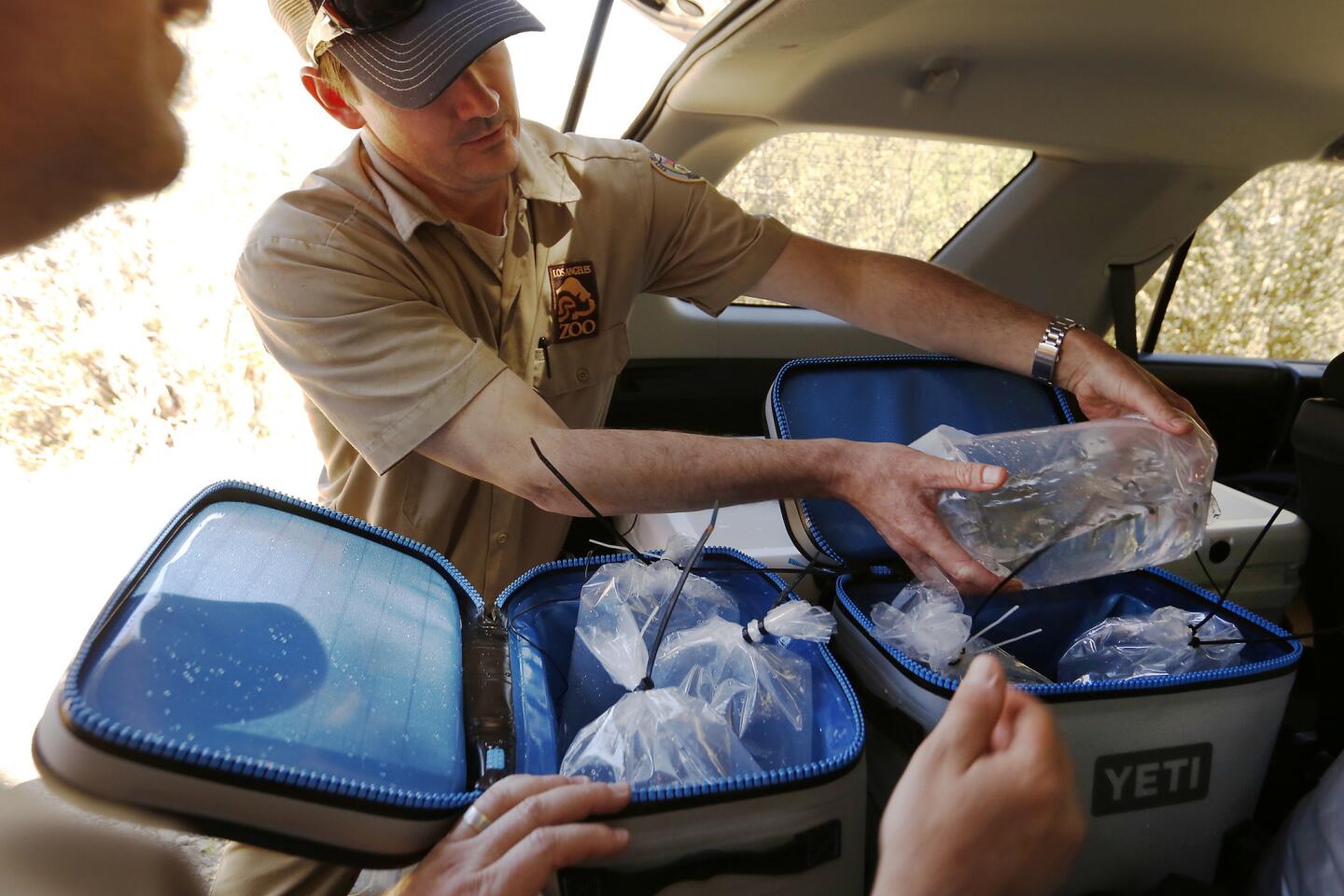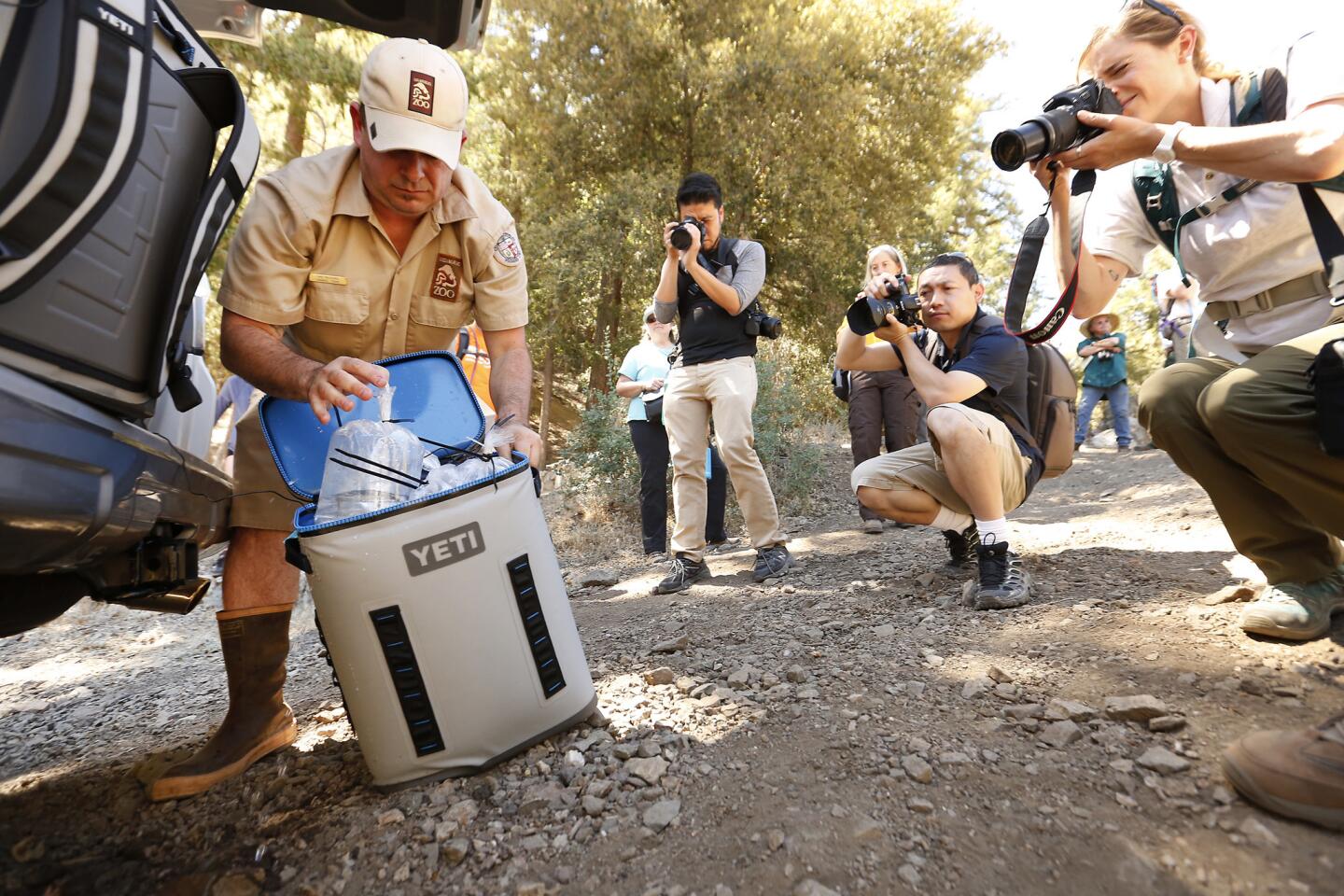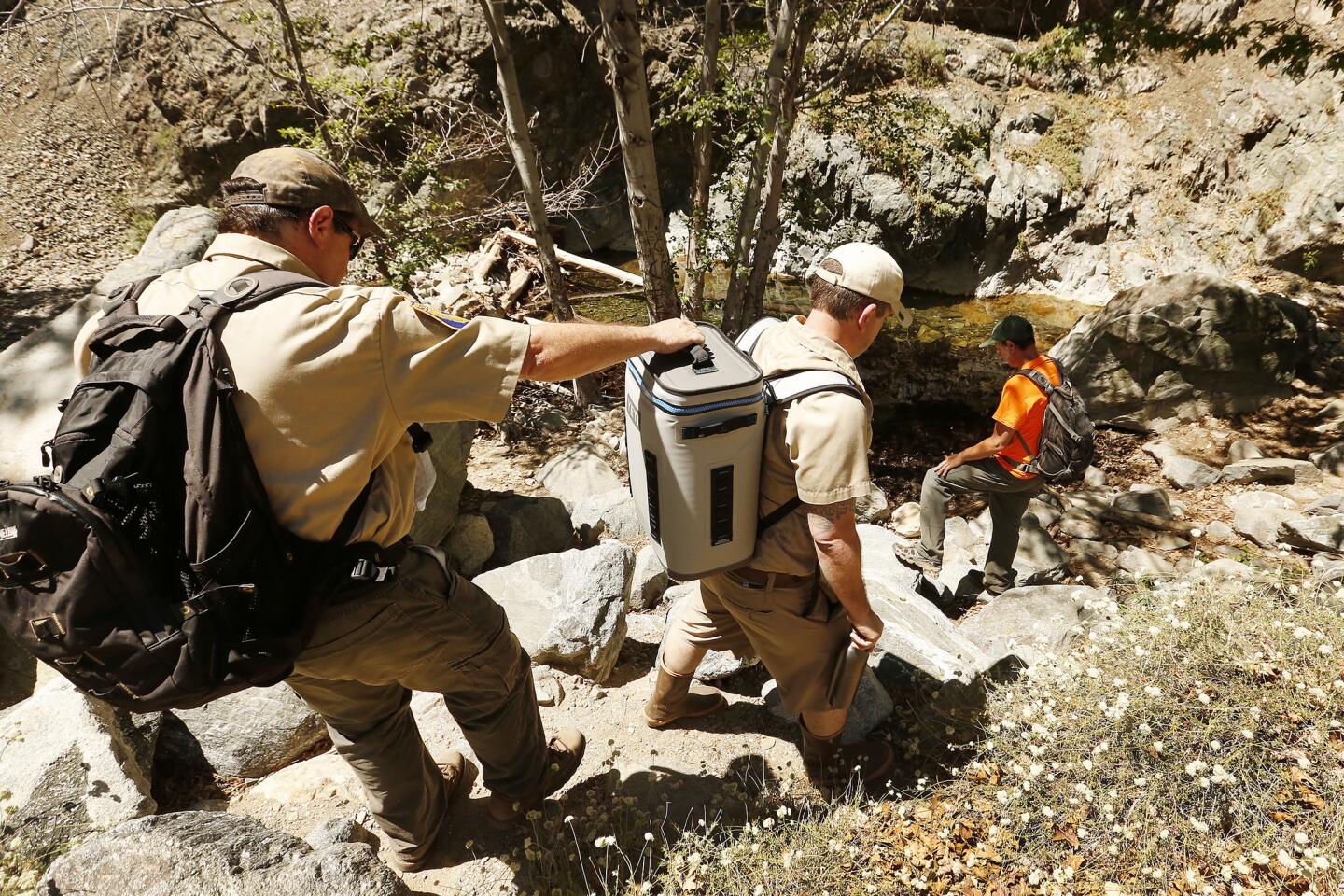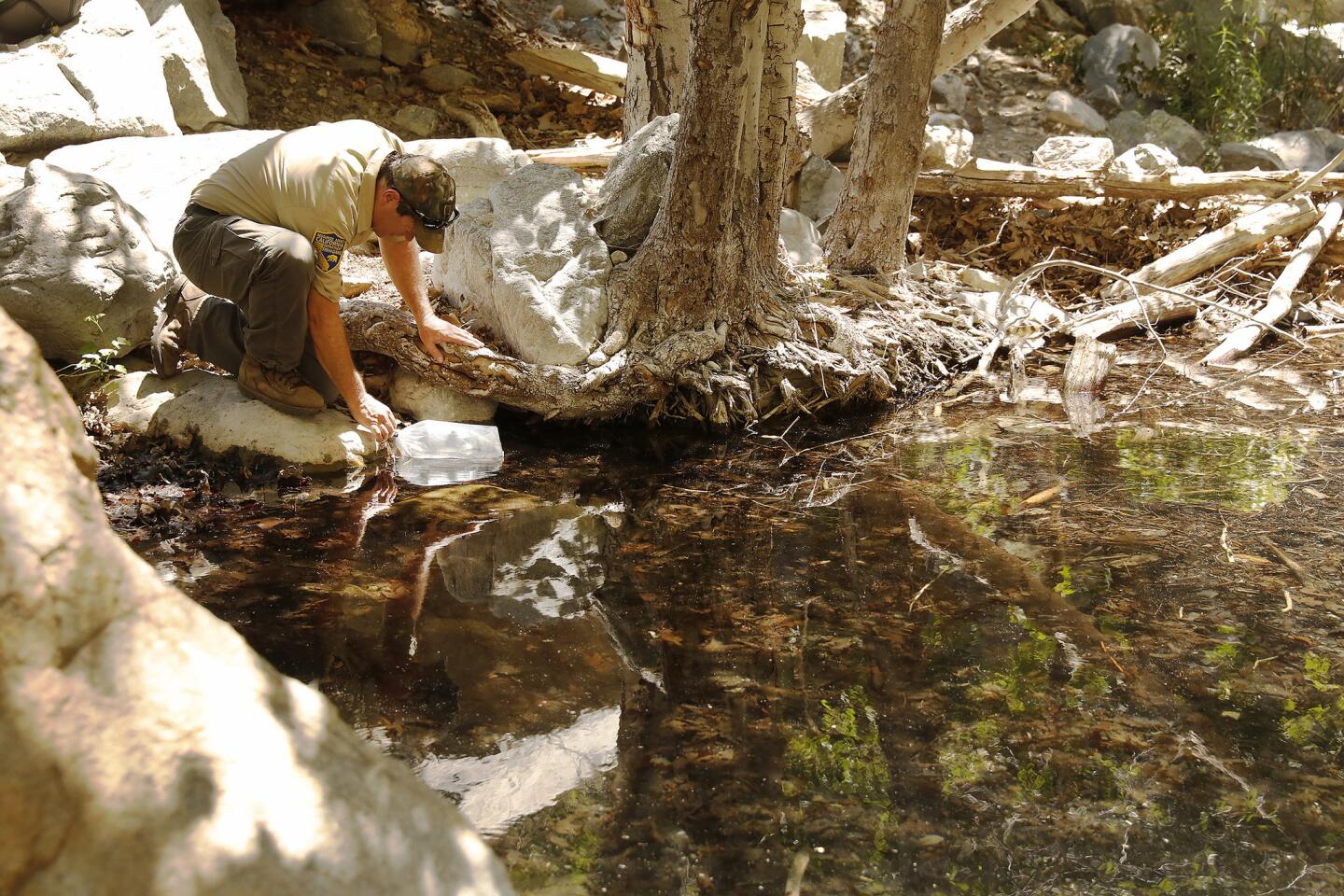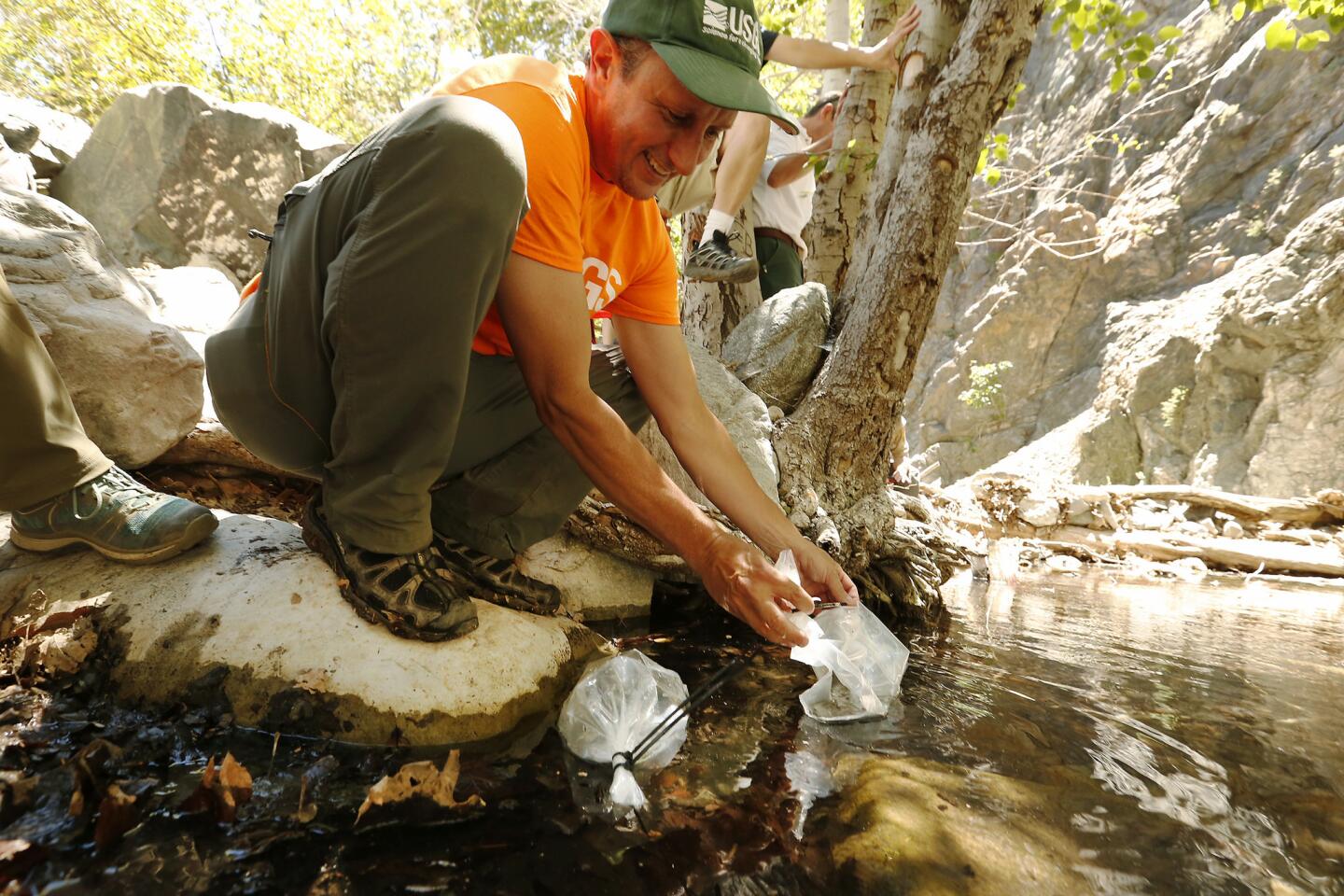Born in a zoo, released into the San Gabriels, a rare Los Angeles frog bounces back
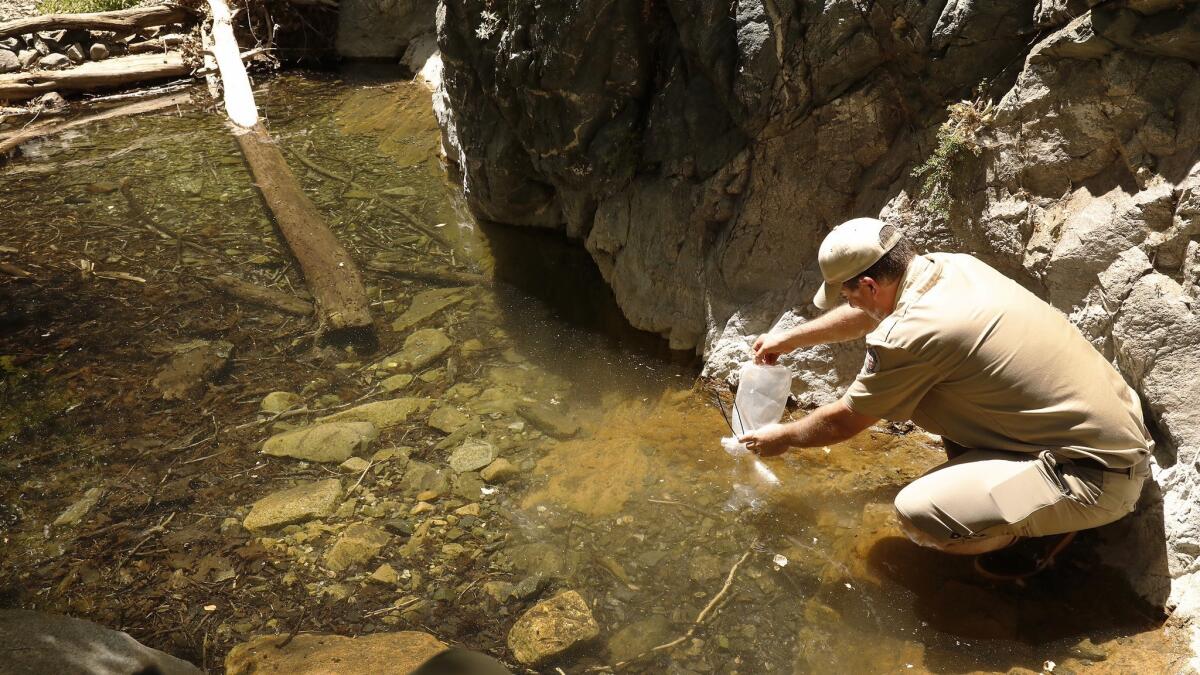
- Share via
The venue: a remote creek in the San Gabriel Mountains.
The attendees: federal ecologists and zoo staffers.
The guests of honor: 500 wriggling tadpoles.
The cause for celebration: A homecoming for one of the most endangered amphibians on the planet.
At 11 a.m. Tuesday, the wildlife experts opened their aquarium bags and gently released 500 Southern mountain yellow-legged frog tadpoles reared at the Los Angeles Zoo into a knee-deep stretch of Big Rock Creek where they’ve been absent for half a century.
It offered all the creature comforts the inch-long amphibians will need to metamorphose into frogs and produce new generations in the wild: cascading spring water and snowmelt edged with alders and buzzing with insects to feed on.
“And away they go,” Ian Recchio, curator of reptiles and amphibians at the Los Angeles Zoo, said with a smile as the tadpoles started bulking up on algae. “I think these guys are going to like it here.”
As an added precaution, biologists had eliminated fresh water perils such as predatory fish and crayfish that could tear them apart.
But they didn’t get them all. Team members on Tuesday killed three trout discovered in a pond downstream.
In the coming weeks, hundreds more tadpoles raised at the zoo will be released elsewhere in the San Gabriels, paving the way for the species scientists know as Rana muscosa “to reestablish a thriving population here and grow exponentially,” said U.S. Geological Survey ecologist Adam Backlin, a lead scientist in the reintroduction effort.
A few years from now, if all goes according to plan, the peculiar mating calls of mountain yellow-legged frogs will once again be heard during the spring thaw.
Males announce their availability for amphibian amour with a low-pitched underwater bark. Females bark back to announce whether they’re ready to lay eggs.
The life and times of mountain yellow-legged frogs embody the challenges facing endangered species — and wildlife biologists — in Southern California.
For thousands of years, mountain yellow-legged frogs thrived in hundreds of streams across the San Gabriel, San Bernardino and San Jacinto mountains. Since the 1960s, the species has been decimated by fires, mudslides, pesticides, fungal infections, loss of habitat and the appetites of nonnative trout, bullfrogs and crayfish.
Today, fewer than 400 are believed to exist in isolated wild populations, including a group of about 20 clinging to existence in an upper tributary of Big Rock Creek on the northern slopes of San Gabriel Mountains National Monument.
In 2010, federal wildlife authorities launched an ambitious recovery program that included captive breeding at institutions including zoos, trout removal in some of their ancestral haunts and, in certain areas, barring public access.
The recovery program is a collaborative effort funded by donations, grants and California Department of Transportation funds to mitigate the effects of emergency work stabilizing a slope near the frog’s habitat on California 330 in the San Bernardino Mountains.
It includes the Los Angeles Zoo; the San Diego Institute for Conservation Research; the Henry Doorly Zoo and Aquarium in Omaha, Neb.; the U.S. Forest Service; the U.S. Fish and Wildlife Service; the U.S. Geological Survey; and the California Department of Fish and Wildlife.
The Santa Ana Zoo is expected to join the effort later this year with a new “frog pond” facility designed to rear tadpoles and maintain a population of adult frogs.
There are plenty of tadpoles to go around this summer. A remarkably successful captive breeding effort led by Recchio produced a bounty of 2,500 yellow-legged frog tadpoles — more than the federal restoration program could handle.
Those tadpoles are the offspring of two groups of tadpoles the zoo took into its care in 2014 as a “genetic insurance colony” to help the species avoid extinction, Recchio said.
Their numbers exploded in an amphibian breeding room at the zoo filled with temperature-controlled aquariums equipped to mimic the conditions of the frog’s natural life cycles of winter hibernation, spring thaw and mating season.
“That room is also utterly quiet,” Recchio said, “We’ve learned that privacy is critical to their survival in captivity.”

How well these pampered tadpoles do in the wild remains to be seen.
One reason frogs produce huge numbers of eggs is that life is fleeting for an egg or tadpole. All those eggs compensate for years when creeks dry up, or disease and predators such as garter snakes move in.
Usually found on sunny banks and rocks near riffles, the 3-inch-long frogs are named for the bright yellow that extends from the undersides of the hind legs onto the lower abdomen.
With skin as permeable as a sponge, the species is susceptible to a skin fungus linked to amphibians vanishing around the world. And the fungus and its waterborne zoospores have been detected in local mountain yellow-legged frogs.
Exactly how these frogs are surviving the fungus is a mystery. But scientists theorize that after the fungus first swept through the San Gabriels in the 1960s — wiping out up to 90% of the frog’s population — survivors somehow developed immunity.
Earlier attempts by zoos to reintroduce captive-bred mountain yellow-legged frogs have had limited success.
In 2011, for example, an effort at the Fresno Chaffee Zoo suffered a setback with the deaths of 104 frogs that had been rescued from the fire-stripped San Gabriel Mountains two years earlier.
Nodding appreciatively toward the tadpoles making themselves at home in the stream 35 miles north of downtown L.A., Recchio and Backlin have high hopes for the new arrivals, or depending how you look at it, returnees.
“Geographically, they’re Los Angeles County frogs,” Recchio said.
“They’re peoples’ frogs,” Backlin mused.
More to Read
Sign up for Essential California
The most important California stories and recommendations in your inbox every morning.
You may occasionally receive promotional content from the Los Angeles Times.

